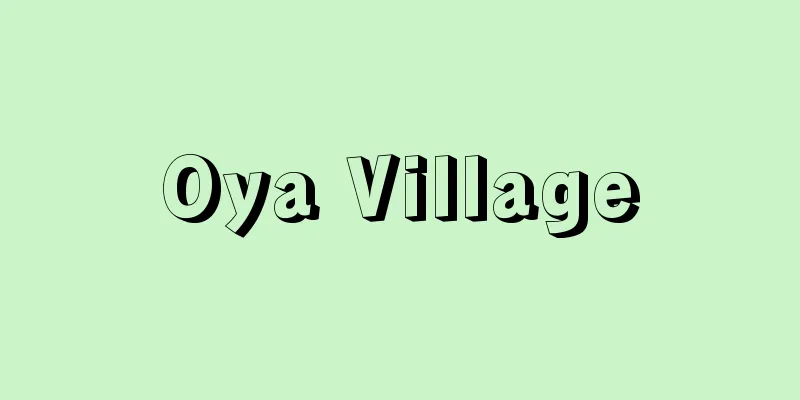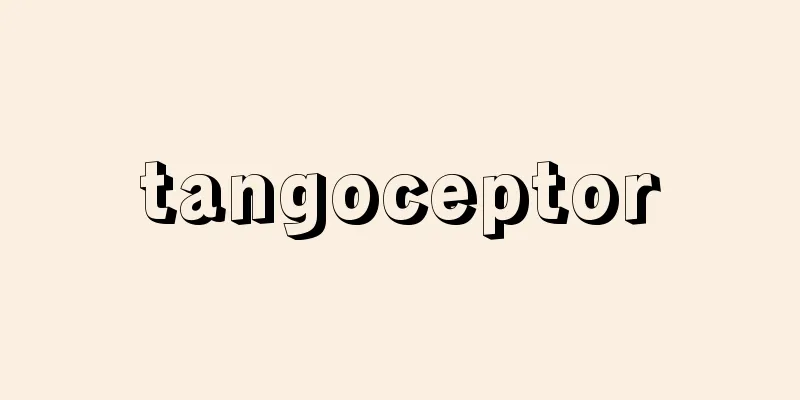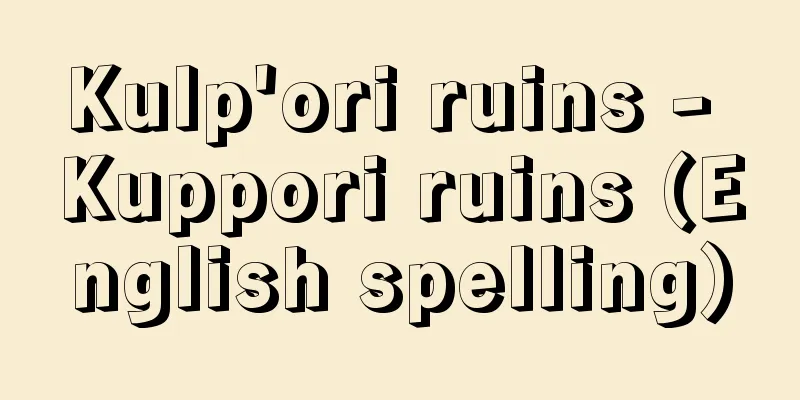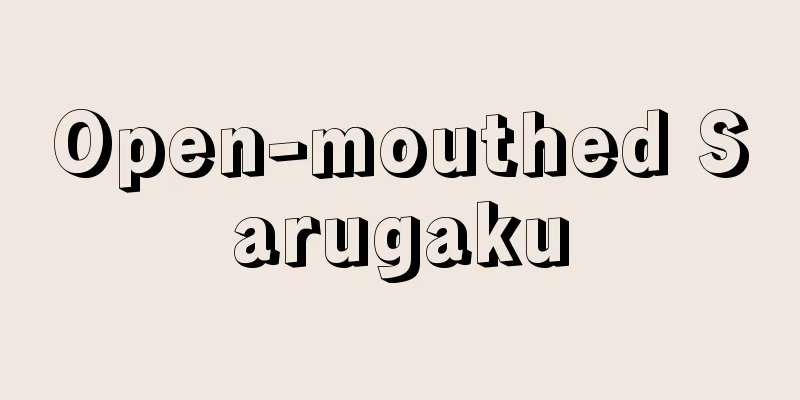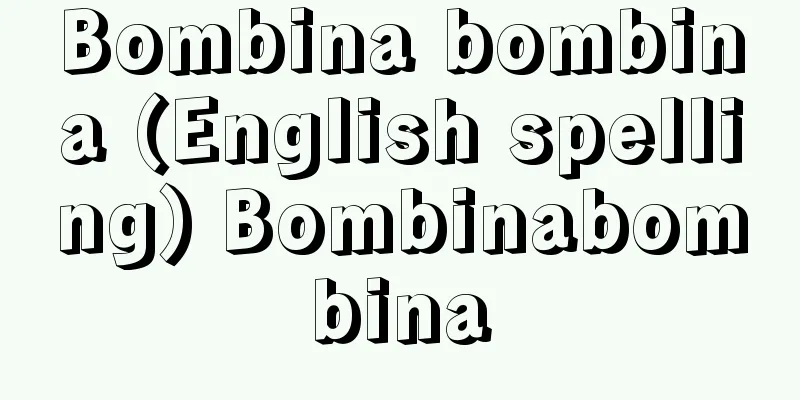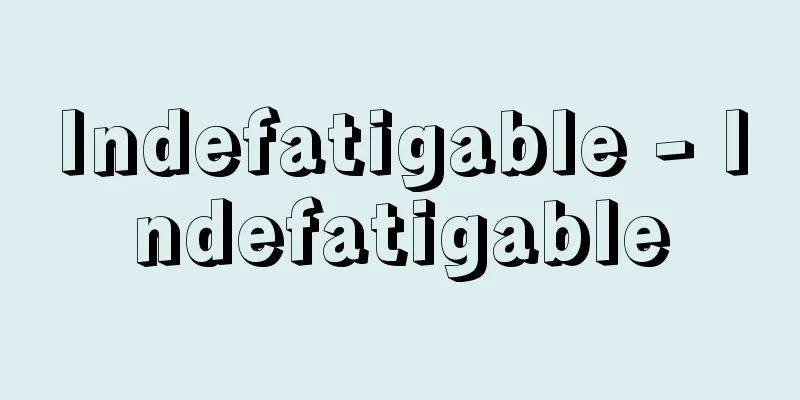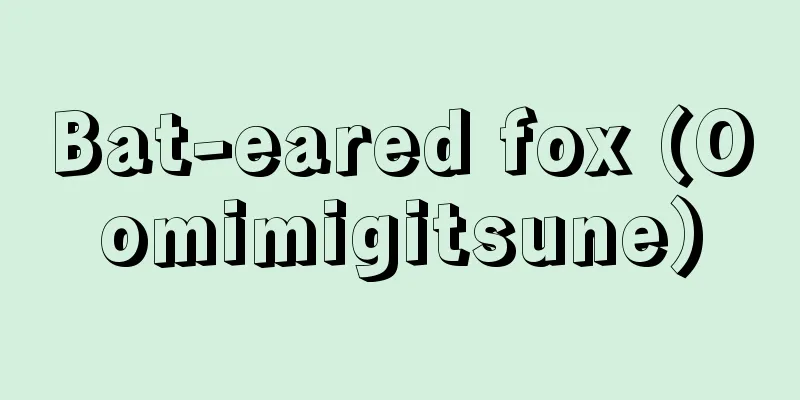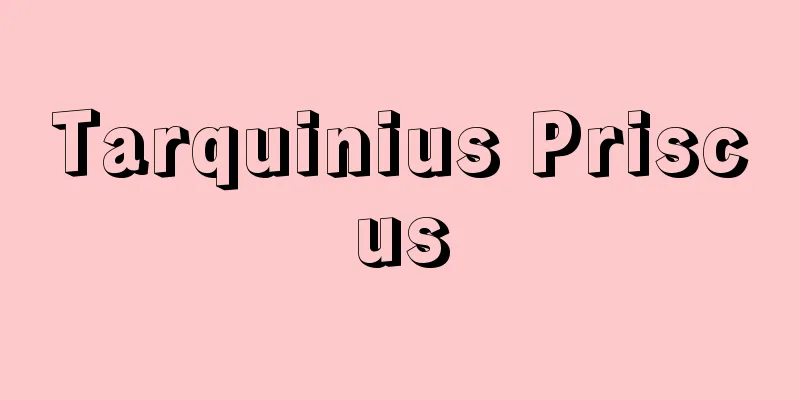Lettering - lettering

|
A design term that refers to the planning and expression activity aimed at creating aesthetically pleasing and effective letter shapes, and the characters created through this are also called lettering. Letters are created by combining lines and dots according to certain rules to express the sounds and meanings of a language, but lettering deals with these lines and dots from the perspective of design. What is required is not just an aesthetic but an effective design, but what constitutes effectiveness will differ depending on the conditions set for each individual design. In other words, the essence of lettering is to impart various different effects to the shapes of letters and character strings in response to the needs of the time. If the aim is simply to be aesthetic and unique, it becomes something called calligraphy or calligraphy. The Kanteiryu style, which was created in the Edo period and is used in Kabuki, the sumo moji found in sumo rankings, and the yose moji used in yose theaters can all be considered examples of lettering. [Kunihiko Takei] Typeface designIt is desirable for characters for printing to be easy to read, and "legibility" in this sense is called legibility. For a typeface for body text, clarity of form and beauty as a group of characters after typesetting are essential. For a typeface for headings, prominence and strength are required. The awareness of characters as a subject of design naturally began with the history of printing technology, and has progressed to the present day. The high level of maturity of design for Latin characters can also be seen from the large number of typefaces available. Type design began with the Gothic style of the mid-15th century, a decorative style with a calligraphic style similar to that used by Gutenberg. Next, in the 1470s, the Frenchman Nicolas Jenson (c. 1420-1480), who was active in Italy, established the Venetian style. In the Roman style, Claude Garamond (1480-1561) and William Caslon (1692-1766) were active, and in the transitional period John Baskerville (1706-1775) established the modern Roman style in the 1790s by Giambattista Bodoni (1740-1813). On the other hand, sans-serif typefaces (without beard ornaments) best embody the ideas of modern design, and are characterized by their simplicity and clarity. Full-fledged sans-serif typefaces began with Renner's Futura (known as Futsura in Japan) in the late 1920s. Futura was supported by the "New Typography" movement of the time, led by Jan Tschichold (1902-74) and others, and was highly praised for its attitude of eliminating ornamentation and seeking rational and clear forms. Beautiful, functional and innovative typefaces such as Neue Haas Grotesque, Universe, and Helvetica have been produced one after another from the sans-serif school. In Japan, the most widely used typeface is Mincho, which has thick vertical lines and thin horizontal lines. In Mincho, the ends of the lines are emphasized. Gothic, which has lines that are almost uniformly thick, is also becoming more widely used. However, it should be noted that the Gothic typeface in Japan is the opposite of the European typeface, being a sans-serif style typeface. The design of these type characters for letterpress printing is called typeface design. In the 1980s, as printing formats and the accompanying typesetters changed dramatically, from letterpress printing to offset printing, and from typesetting to phototypesetting, the design of phototypeset characters also came to be called typeface design in many cases. Furthermore, since the 1990s, with the spread of computers and word processors, there has been active research and development into computer-based characters such as dot fonts and outline fonts. In either case, what is desired is a form that emphasizes universality, versatility, and rationality for characters and groups of characters. [Kunihiko Takei] Logotype designA logotype is a design in which the characters of a product name, company name, event name, etc. are designed as a single unit. As a printing term, logotype means idiomatic type (several characters cast into one piece of type), but as a design term, it is used to mean a specially created character in which not only the shape of each character is specified, but also the order of the characters and the space between each character are specified. Since logotype designs are characters designed for a specific purpose and used as a system, they are required to be unique and impressive. The shape must not be too far removed from the image of the industry, but it must have a unique and individual expression that clearly distinguishes it from other companies in the same industry. Therefore, the aim is to create a shape that takes into consideration universality as well as particularity, versatility as well as specificity, and rationality as well as irrationality. [Kunihiko Takei] Lettering designThis refers to lettering that is done as part of design activities. When there is no existing typeface (such as a typeface for typesetting, phototypesetting, or computer font) that matches the image to be created for the work, a new and effective letter form must be created. In such cases, letter design that is neither typeface design nor logotype design is performed. This is true lettering design in the narrow sense, and the only aim is for the form to be both aesthetic and effective. Viewpoints such as universality, versatility, and rationality are not necessarily important. In today's Japan, there are very few opportunities to come into contact with lettering design in the narrow sense. If we look into the actual state of what is called lettering design, the majority of it is logotype design. In general, typeface design is also often referred to as lettering design. [Kunihiko Takei] "Lettering Design" by Yasaburo Kuwayama (1969, Graphic-sha)" ▽ "Introduction to Lettering" by Isao Nakata (2 volumes, 1983, Bijutsu Shuppansha)" ▽ "Introduction to Basic Lettering" by Toshiharu Seno (1997, Nihon Bungeisha)" [References] | | |Source: Shogakukan Encyclopedia Nipponica About Encyclopedia Nipponica Information | Legend |
|
デザイン用語。文字の形姿の美的かつ効果的な形成を目ざして行う表現計画活動をいい、それによって表された文字をもレタリングと称する。 文字は、一定の法則のもとに線や点を組み合わせて、言語の音や意味を示すものであるが、レタリングは、これらの線や点について造形という視座から関与する。単に美的であるだけでなく、効果的な造形であることが要請されるが、効果的であることの内容は、個々の造形に際して設定される条件により異なったものとなる。いわば、さまざまに異なる性格の効果を、そのときどきの要請に応じて、文字および文字列の形姿に付与することが、レタリングの本質なのである。美的であること、個性的であることだけを目ざすのであれば、それはカリグラフィー、あるいは書道とよばれるものになる。 江戸時代に創作され、歌舞伎(かぶき)に使われている勘亭流、相撲(すもう)番付に見受けられる相撲文字、寄席(よせ)で使われている寄席文字などは、レタリングの一つの成果ということができよう。 [武井邦彦] タイプフェイス・デザインtypeface design印刷用の文字は、読みやすい造形であることが望ましく、この意味での「読みやすさ」をレジビリティlegibilityという。本文用書体であれば、その形姿の明瞭(めいりょう)明快さと、組版後の文字群としての美しさが不可欠である。見出し用書体であれば、目だつことと強さが要求される。文字をデザインの対象にするという意識は、当然のことながら、印刷技術の歴史とともに始まり、今日の状況まで進捗(しんちょく)してきた。ラテン系文字におけるデザインの成熟度の高さは、その豊富な書体数によってもうかがい知ることができる。 活字文字のデザインは15世期中期のゴシック書体から出発する。グーテンベルクが用いているような筆写風の装飾的書体である。次に1470年代にイタリアで活躍したフランス人ジャンソンNicolas Jenson(1420ごろ―80)がベネチアン書体を確立する。さらにローマン書体では、ギャラモンClaude Garamond(1480―1561)、カスロンWilliam Caslon(1692―1766)が活躍、過渡期のバスカービルJohn Baskerville(1706―75)を経て、1790年代に至ってボドニーGiambattista Bodoni(1740―1813)によってモダン・ローマン書体として確立された。 一方、近代デザインの発想をもっともよく体現しているのがサンセリフ(ひげ飾りのない)書体で、飾り気のない単純明快さを特徴とする。本格的なサンセリフは、1920年代後半のレナーによるフツーラ(日本ではフーツラと呼び習わしている)に始まる。フツーラは、チヒョルトJan Tschichold(1902―74)らによる当時の「ニュー・タイポグラフィ」運動から支持されるが、装飾性を排し、合理的で明快な形姿を求めようとするその態度が高い評価を得たのである。サンセリフの系統からは、ノイエ・ハース・グロテスク、ユニバース、ヘルベチカのような、美麗かつ機能的で斬新(ざんしん)な書体が次々に生み出されている。 日本の書体では、縦線が太く横線の細い明朝(みんちょう)体がもっとも広く用いられている。明朝体では線端が強調されている。なお、線がほぼ一様に肉太であるゴシック体も、多用されるようになってきた。ただし日本でいうゴシック体が、ヨーロッパのそれとは正反対の、サンセリフ風書体であることは注意を要する。 これら活版用活字文字のデザインをタイプフェイス・デザインという。1980年代、活版印刷からオフセット印刷へ、活字植字から写真植字へと、印刷形式およびそれに伴う植字形態が大幅に変容したのに伴って、写真植字文字のデザインをもタイプフェイス・デザインとよぶことが多くなってきた。さらに1990年代以降、コンピュータやワードプロセッサーの普及によるドット・フォントやアウトライン・フォントなどのコンピュータ用文字の研究開発も盛んである。いずれの場合も、文字および文字群として、普遍性、汎用(はんよう)性、合理性などを重視した形姿が希求される。 [武井邦彦] ロゴタイプ・デザインlogotype design商品名や社名、催事名などの文字を、一つのまとまりとしてデザインするもの。印刷用語としてのロゴタイプは成語活字(1本の活字の中に何文字かを鋳込んだもの)の意味だが、デザイン用語としては、単に個々の文字の形姿が規定されているだけでなく、綴(つづり)字の順序や各綴字間のスぺースまでも規定されている、創作された特殊制定文字の意に用いる。ロゴタイプ・デザインは特定の目的のためにデザインし、制度として使用してゆく文字であるから、個性的で印象的な表現であることが要請される。業種のイメージからかけ離れた形姿であってはならないが、同業他社とは明確な区別がなされるほどの、斬新で個別的な表情をもたせなくてはならない。したがって、普遍性とともに特殊性、汎用(はんよう)性とともに限定性、合理性とともに非合理性をも顧慮した形姿が目ざされることになる。 [武井邦彦] レタリング・デザインlettering designデザイン活動の一環として行われるレタリングをいう。作品の制作イメージに合致する既成書体(活字文字書体・写植文字書体やコンピュータ用文字書体など)がないとき、新規に、効果的な文字形姿を創作しなければならない。そういうときには、タイプフェイス・デザインではなくロゴタイプ・デザインでもない文字デザインが行われる。これが真正、かつ狭義のレタリング・デザインであり、美的かつ効果的な形姿であることだけが目ざされる。普遍性、汎用性、合理性などの視座はかならずしも重要ではない。 今日の日本において、狭義のレタリング・デザインに接する機会はきわめて少ない。レタリング・デザインとよばれているものの実態を調べるならば、その大半はロゴタイプ・デザインである。なお、一般にはタイプフェイス・デザインをもレタリング・デザインとよんでいることが多い。 [武井邦彦] 『桑山弥三郎著『レタリングデザイン』(1969・グラフィック社)』▽『中田功著『レタリング入門』全2冊(1983・美術出版社)』▽『瀬野敏春著『基本レタリング入門』(1997・日本文芸社)』 [参照項目] | | |出典 小学館 日本大百科全書(ニッポニカ)日本大百科全書(ニッポニカ)について 情報 | 凡例 |
Recommend
Marāgheh (English spelling)
A city in the northwestern part of Iran, in East A...
Awaji Dolls
A three-person puppet theater from Awaji Island, ...
Revenge in Raglan Sleeves - Revenge in Raglan Sleeves
(1) Ningyo-joruri. Historical piece. 3 volumes. A ...
Standard hydrogen electrode
…The equilibrium electrode potential of this elec...
Murji'a - Murjia is (English spelling)
A theological school that existed before the esta...
blackfin tuna
...In Japan, tuna usually refers to a large macke...
Cotton seat
A troupe that sold cotton. In 1343 (Kokoku 4/Koei ...
blasting explosive
…The former are substances that can be detonated ...
Xia (late Sui) - K
…He was a powerful local farmer with experience a...
Issando Eishun
…He was born in Matsumoto, Shinshu, and went to E...
Flowering hormone
Plants form buds (flower buds) and produce flowers...
Kuwashita Nenki - Kuwashita Nenki
In the Edo period, this meant exempting land devel...
God of the Back Door
…Typical examples include the Vajrapani in the Ho...
Dactyloptena gilberti (English spelling)
…[Toru Taniuchi]. … *Some of the terminology that...
Masakuni Abe
1658-1715 A daimyo from the early to mid-Edo peri...

